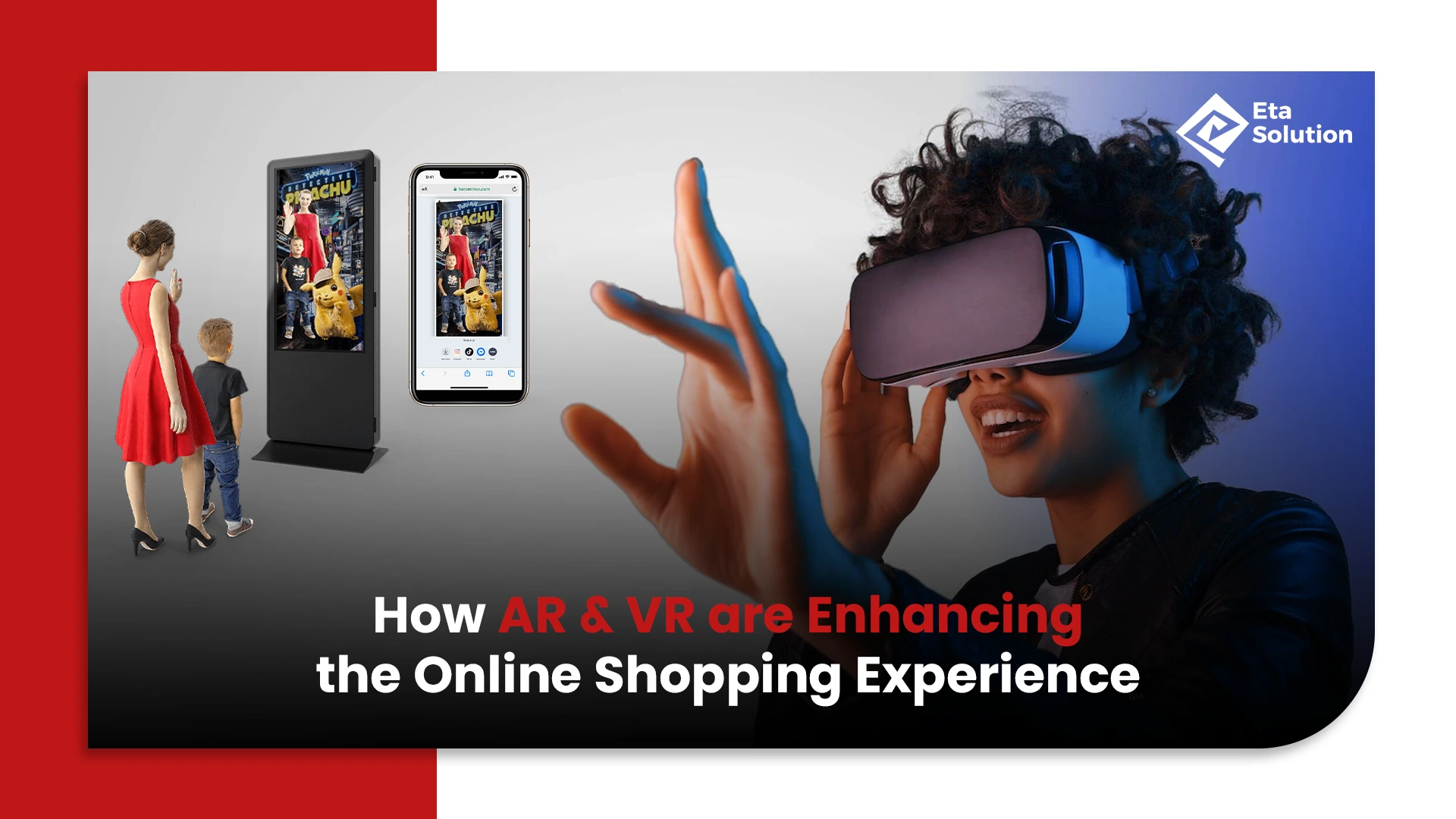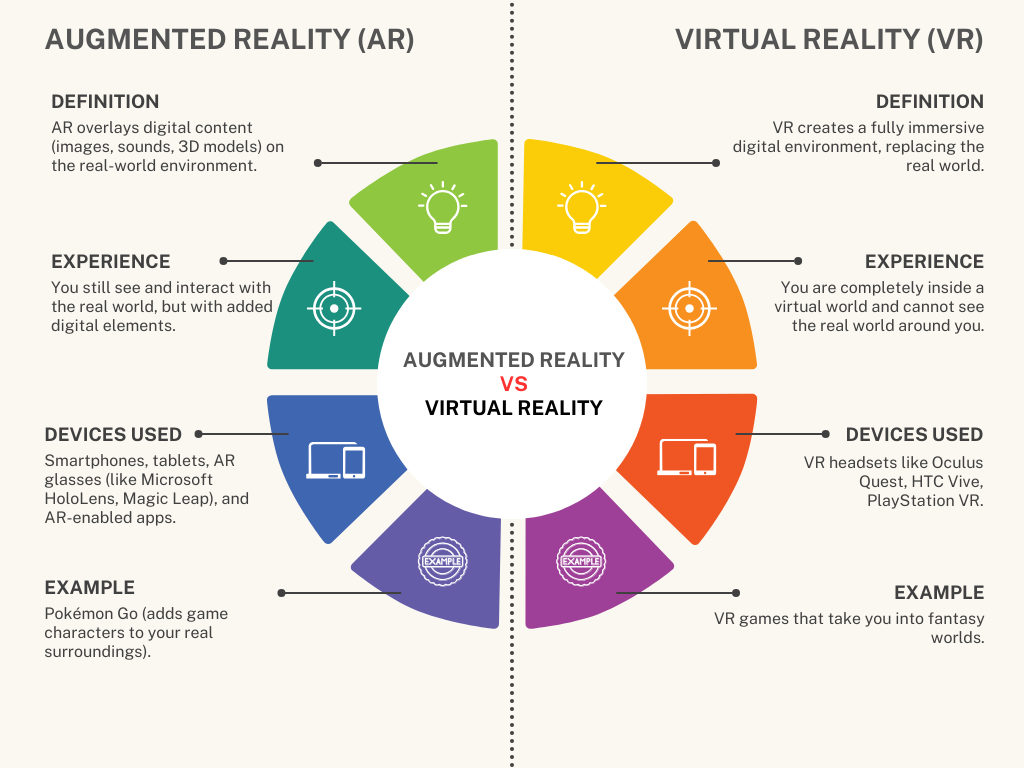
How AR & VR are Enhancing the Online Shopping Experience
In today’s market, online shopping is no longer about the convenient clicks; but about delivering the exquisite experience.
In an ecommerce market flooded with similar products and endless scrolls, what turns a brand into an icon? The answer is experiences. And that’s where Augmented Reality (AR) and Virtual Reality (VR) play a role as buzzwords and strategic tools that link digital & reality.
Just imagine a scroller doesn’t just have a look at your product, but wears it, places it into their home or takes a step into your visual store. This is the “new new” in the space of innovation and if your brand isn’t capitalising on it, you are already behind.
For any visionary ecommerce marketing company, combining AR & VR isn’t just a feature, it’s an edge. Let’s discover how you can create visual experiences that attract, engage & delight.
Why AR Shopping is the new standard, not a new trend
“If your buyers can’t put your products over them or in their space, they’ll just swipe away.” Let’s see how the below brands keep up with the tech trends:
- A survey by Interactions Consumer Experience Marketing shows that 61% of customers prefer retailers that offer AR experiences.
- Shopify research shows that AR-driven products turn out 94% better than non-AR pages.
- According to a report by Designhubz, 77% of buyers say that they choose to try before they buy.
More than the figures, this depicts a transition in behaviour. Shoppers now are no more passive browsers, they are an active traveler in their journey. And that’s why now they expect their brands to keep up.
Virtual Try-Ons: From Fitting Rooms to Filters
Virtual try-ons have changed from a “cool feature” to a “digital innovation”. Here’s how industry giants are setting the standards:
- L’Oréal observed a 49% rise in conversions after implementation of Modiface AR technology.
- Warby Parker’s AR try-on enables an effortless shopping; no app, no purchase.
- Sephora’s purchasers spend 2.5x time more on product pages using AR try-ons.
An ecommerce marketing company should try to integrate AR try-ons where “fit” or “feel” matter across every industry. From eyewear to apparel to jewellery, virtual try-ons aren’t limited to just fashion, now other industries like automotive and home decor are integrating these tools to allow “test-before-trust.”
What is the difference between AR and VR technology

Real-World Visualization: Try it before you Buy it
It’s because of the augmented reality that online shopping provides “try before you view” by giving life to the Pinterest boards. Imagine placing the couch right beside your coffee table before ever hitting “Buy Now.” This is no more a future talk, but a reality for the market leaders:
- IKEA Place App gives the power to the users to visualise true-to-scale 3D furniture in their private space, leading to a 35% deduction in returns.
- Amazon AR View shows buyers exactly how gadgets, lamps, and more will look in their environment.
- Wayfair utilises room-based AR that removes doubts and drives decisions.
These technologies lead to lesser refunds, quick decisions, and higher satisfaction; helping brands in integrating furniture, appliances, and other decor as standard and not an upgrade.
Virtual Browsing meets Real World
“Don’t just browse, walk through the brand.”
With virtual reality, potential buyers can now tour stores while relaxing at home. These experiences give a feeling of in-store shopping effortlessly.
- Lowe’s Holoroom: Allows shoppers to design their rooms in VR before buy-in.
- Tommy Hilfiger & The North Face: In-store VR mirrors resulted in significant customer engagement.
- Alibaba’s Buy+: Rolled out a fully experiential VR shopping mall for Singles Day; where online retail felt almost real.
What was once limited to trade exhibitions and tech expo is now available to consumers on their smartphones, allowing brands to recreate their vibe all digitally.
The Evolution of Brand Storytelling
Interactive shopping isn’t just seen, but also felt. Because customers want stories, not specs. And that’s where AR and VR serves up:
- Patagonia: Documentaries created through VR on sustainability increased brand loyalty.
- Nike: Leverages AR combined with motion sensors recommend custom-fit shoes.
- Netflix: Enabled VR in Stranger Things to pull fans deeper into the Netflix Universe. And without any sales pitch, it led to brand connection.
Storytelling becomes more strong when buyers don’t just skim about a value, but when they experience it themselves. Brands that create interactive campaigns build last memories, not just words.
When Packaging Starts the Conversation
Unboxing is already a moment. With AR, it turns into a micro-experience. Brands are changing packaging into conversion tools:
- Amazon allows consumers to scan QR codes that launch tutorials, deals, and exclusive offers.
- Nestle’ noticed a jump in interaction of almost 32% with AR enabled packaging on cereals.
- Coca-Cola brought Santa Claus to life using an AR scan to create a magical experience during the holidays.
This is a subtle yet powerful form of retail innovation. Innovative ecommerce marketing companies transform post-checkout experience into storytelling that keeps the brand story alive. And let’s remember that packaging is the only marketing your customer literally holds in their hands. Making it interactive will add surprise, delight, and depth to the brand’s connection.
Confidence = Conversions
“Shoppers nowadays don’t want more options, but more certainty.”
When customers believe what they see, they’re more likely to purchase. That’s why AR shopping and VR shopping directly drive performance. And the data backs it up:
- Deloitte: Buyers feel 80% more confident through captivating technologies.
- Shopify: There is a 65% increase in the probability of purchase using AR.
- AR/VR: reduces confusion and lowers return rates by almost 40%.
Today, “try before you buy” isn’t just a luxury, it’s the new default. This is where the future of tech shifts from novelty to customer engagement engine. In all, it’s not just about surprising the customers, but about removing their confusions. This is why confidence is the real conversion metric.
AR vs. VR: Which Wins?
Emotional engagement? You can get there without the gear.
- AR: It is simple and can be accessed through just a smartphone.
- VR: It is deeply lifelike but headsets & personal space is required.
Smart brands choose on the basis of:
- Audience inclination
- Product complexity
- Consumer decision stage
Some try to choose hybrid method; starting with AR for exploration and offering VR for in-depth discovery. The smart move is not choosing any one of them, but understanding when to use each.
The result? Better customisation, higher interaction, and more conversions.
AR + VR + AI = Retail’s Power Trio
“AI suggests. AR & VR show.”
Imagine this:
- AI lets you choose your size and style
- AR allows you to try it instantly
- VR makes you step into a store built just for you
Together, these tech powers personalisation and immersive shopping at scale. According to McKinsey, brands who adopt this trio are likely to grow 2x faster than their competitors. In this integration, AI brings value and VR brings experience. And together, they don’t just sell products, but possibilities.
Challenges? Yes. Excuses? No.
Experiential content can be expensive, and not everyone owns a headset. But if one waits for the perfect moment, consider it gone. That’s where advancement steps in:
- 5G enables smoother mobile AR
- WebAR removes the need for an app
- Headsets are more affordable than ever
- AR commerce is projected to reach $85 billion by 2027
The right ecommerce technology partner helps brands overcome barriers with smart, scalable solutions. Today many AR tools are ready to use right out of the box by adding social filters, virtual stores, and effortless 3D previews that easily fit into your existing platform without the need for heavy tech techniques.
What’s Next: Glasses, Malls & Metaverse Moves
The trends of now are table stakes of tomorrow. Some are already ahead of you:
- Apple Vision Pro is adopting AR shopping into the mainstream.
- Zara is testing holographic shopping assistants.
- Gucci’s Metaverse store attracted 19 million visitors in just 8 weeks.
Apart from big brands, even grocery stores are planning AR-guided aisles and location-based offers that adapt as you move in through the store. Early adopters aren’t running behind the buzz, they’re banking results; and so should you.
Final Thoughts
“People forget websites. They remember experiences.” In the crowded battlefield of online retail, AR and VR are no longer futuristic gimmicks, they’re today’s growth engines. They reduce returns. They build trust. They create moments of emotional connection. And above all, they sell.
The real winners of this decade will be the brands that stop thinking in flat screens and start thinking in dimensions.
So ask yourself not can we afford to invest in immersive shopping, but can we afford not to?
If you’re ready to lead, not follow, partner with an Ecommerce Marketing Company in Ahmedabad that turns powerful tech into real-world results. The future of digital shopping is already here. Your customers are waiting to see it literally.
AR (Augmented Reality) lets customers visualize products in their real environment, like seeing how furniture fits in a room, while VR (Virtual Reality) creates immersive store-like experiences from home. Together, they make shopping more interactive and confident.
AR & VR are especially useful for fashion, furniture, cosmetics, and home décor. These technologies help customers “try before they buy,” which reduces returns and improves satisfaction.
For AR, most smartphones or tablets are enough. VR may require headsets like Oculus or Meta Quest for a fully immersive experience, though some brands also offer 360° web-based VR experiences.
Yes, most AR and VR shopping tools are secure. They follow the same online shopping security protocols, and your personal or payment information isn’t accessed by the AR/VR features.
Major brands like IKEA, Lenskart, Sephora, Amazon, and Nike are already using AR/VR tech to let users try products virtually, explore virtual stores, or customize items in real-time.

What started as a passion for marketing years ago turned into a purposeful journey of helping businesses communicate in a way that truly connects. I’m Heta Dave, the Founder & CEO of Eta Marketing Solution! With a sharp focus on strategy and human-first marketing, I closely work with brands to help them stand out of the crowd and create something that lasts, not just in visibility, but in impact!

Performance Max vs. Manual Campaigns: What Works Best

Social Engine Optimization: Win the Social Search Game


